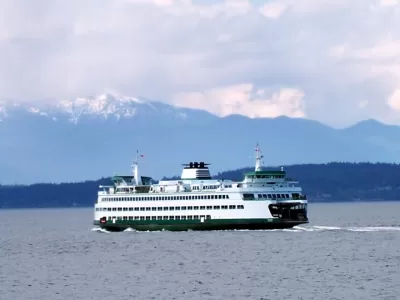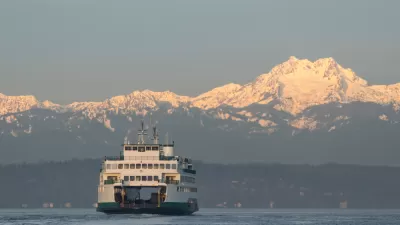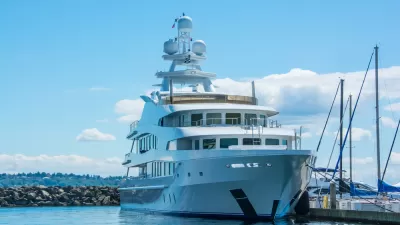The state's ferry system has seen ridership increases year after year, and a new plan outlines the long-range measures needed to keep up with the growth.

Stephen Fesler reports that ridership on the Washington State Ferries (WSF) in 2018 was the highest since 2002. While some routes did see ridership drops, walk-on passenger ridership overall grew by 1.2 percent in 2018 and ridership has increased 10 percent in the last five years.
WSF has struggled with its aging fleet and last year had several breakdowns that took vessels out of service and suspended service on one route. The recently released WSF 2040 Long Range Plan includes a call to acquire 16 new vessels by 2040. The plan, which still needs approval from the state legislature, also seeks to convert the ferry system from diesel to hybrid-electric.
"But the plan is still far short of the expansion needed to support projected growth to 32.5 million annual riders by 2040, a 30% increase in demand; walk-on passengers are expected to grow by 45%," writes Fesler.
FULL STORY: Washington State Ferries Ridership Hits A 16-Year High

Maui's Vacation Rental Debate Turns Ugly
Verbal attacks, misinformation campaigns and fistfights plague a high-stakes debate to convert thousands of vacation rentals into long-term housing.

Planetizen Federal Action Tracker
A weekly monitor of how Trump’s orders and actions are impacting planners and planning in America.

San Francisco Suspends Traffic Calming Amidst Record Deaths
Citing “a challenging fiscal landscape,” the city will cease the program on the heels of 42 traffic deaths, including 24 pedestrians.

Defunct Pittsburgh Power Plant to Become Residential Tower
A decommissioned steam heat plant will be redeveloped into almost 100 affordable housing units.

Trump Prompts Restructuring of Transportation Research Board in “Unprecedented Overreach”
The TRB has eliminated more than half of its committees including those focused on climate, equity, and cities.

Amtrak Rolls Out New Orleans to Alabama “Mardi Gras” Train
The new service will operate morning and evening departures between Mobile and New Orleans.
Urban Design for Planners 1: Software Tools
This six-course series explores essential urban design concepts using open source software and equips planners with the tools they need to participate fully in the urban design process.
Planning for Universal Design
Learn the tools for implementing Universal Design in planning regulations.
Heyer Gruel & Associates PA
JM Goldson LLC
Custer County Colorado
City of Camden Redevelopment Agency
City of Astoria
Transportation Research & Education Center (TREC) at Portland State University
Jefferson Parish Government
Camden Redevelopment Agency
City of Claremont





























